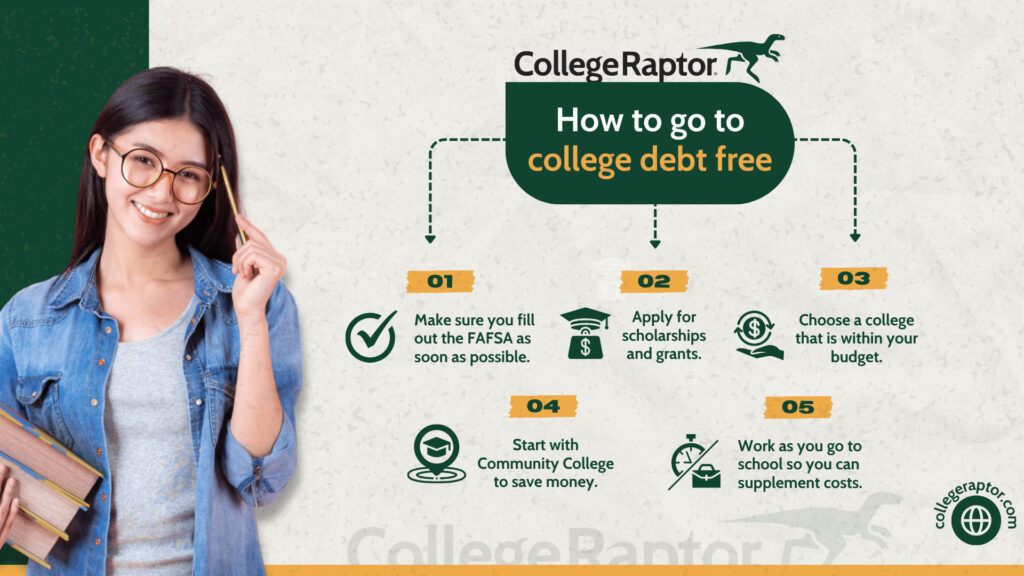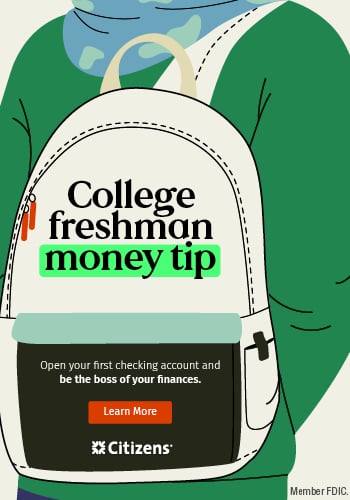With the cost of college, graduating with no debt is reserved only for a lucky few. For the majority of students, graduating with some amount of debt is inevitable. There’s nothing you can do about that reality. However, with some savvy planning, you can reduce your overall debt substantially. If graduating with minimum debt is a priority for you, these ideas may help.

Photo by Emily Ranquist from Pexels
Make Smart Choices About Which College To Attend
Many people assume that in-state public colleges are much more affordable than private universities, but that can be a common misconception. While private colleges have higher sticker prices on average, they also tend to give their students much more substantial financial aid packages. That means that the student pays just a fraction of the marketed cost.
Understanding the difference between sticker price and net price is vital when planning college finances. Colleges are the second largest provider of scholarships in grants (second only to the federal government). So while a private institution might say it costs $26,000 per year to attend, you might only pay $12,000 of that out-of-pocket.
When it comes to making a smart, affordable choice, it’s important to compare and contrast the award letters a college sends you. If you want a super easy and free way to estimate your personal cost of attending a certain college, we’ve got you covered. College Raptor’s match tool can show you not only an estimate of how much you’d have to pay for a school but also what your estimated debt upon graduation might be.
You will pay even less if you choose to complete your first 2 years in community college. Then, transfer to a 4-year institution.
You will have to do a bit of homework to find out if you can transfer credits and other procedures and formalities to ensure that you are choosing something that fits your career goals, but it is well worth it when you consider that you will graduate with so much less debt.
Explore All Scholarship Opportunities
Scholarships are the best way to fund your higher education since you don’t have to pay them back. Here are some interesting facts you should know about scholarships:
Scholarships are free, which means you do not have to worry about having to repay the principal or interest.
Not all scholarships are reserved for academic or athletic accomplishments. Different organizations have different eligibility criteria for awarding scholarships. You’d be surprised at what you may qualify for—musical talent, ethnicity, artistic achievements, being pagan, committed to a vegetarian lifestyle, and even being able to speak fluent Klingon. Just have to look.
You are not limited in the number of scholarships you can apply for every year. You can apply for all the scholarships that you are eligible for every college. Use them all to fund your education!
The more scholarships you apply for, the higher your chances of winning.
There is an estimated $3.4 billion available every year to students by way of scholarship money. To get a piece of that pie, you just need to do your research and apply.
There are virtually no downsides to scholarship money. It makes sense to keep aside a chunk of time to explore and apply to all opportunities that you qualify for.

Don’t Forget About College Grants
College grants are another excellent source of free money. They are different from scholarships in that they are exclusively need-based. You do not need to meet any eligibility criteria other than having a financial need. There are several federal education grants that are reserved for students with financial need. Two of the most well-known are the Federal Pell Grant and the Federal Supplemental Educational Opportunity Grant, but there are others too.
In addition, some schools and other private organizations also offer need-based grants. Many of these have early deadlines and they reach their limit early in the cycle so it is advisable to start your search early. As with scholarships, the earlier you apply, the better your chances of winning any grant money.
Apply for Financial Aid So You Get Minimum Debt
Prioritize your financial aid opportunities and start with filling the FAFSA or the Free Application for Federal Student Aid. Submitting the FAFSA as close as possible to January 1st will give you the best chances of getting the aid you need as most lenders award aid on a first-come, first-serve basis. Don’t reduce your chances of getting more aid and ultimately less debt!
Depending on your available personal funds and the money you get by way of scholarships and grants, you will need to make up the deficit by taking a student loan. There are two types of student loans—federal and private. Federal student loans have better terms and conditions, more flexibility in terms of forgiveness and best of all, lower rates of interest.
Federal student loans should be your go-to resource for student loans. You should only consider private loans if you need additional funds over and above what you have managed to get from the other sources—personal funds, scholarships, grants, and federal student loans.
Work While In College
Working in college may not be advisable for everyone. However, if you can manage to work without compromising your studies, you should consider it. Remember, your academics should always come first.
There are a couple of options out there if you decide to work while studying.
You can take up a job on campus while cutting back on the number of classes you take. This may delay your graduation date but it can be a relief to know that when you do graduate, it will be with far less debt than your classmates.
The other option to reduce your debt is to look for a tuition-reimbursement program.
Check Your Spending Habits
It may seem unnecessary but it needs to be said. You may have visions of pizzas, parties and lavish spending sprees while you are away from home, but if your goal is to reduce the amount of debt you have while in college, you will have to live a more frugal lifestyle. There’s no better time to start saving than now. Every little bit counts and by the time you graduate, you will have saved more than you thought possible.
Use College Raptor’s new Student Loan Finder to discover personalized loan options. Compare lenders and interest rates to find the ideal student loan—for FREE!









